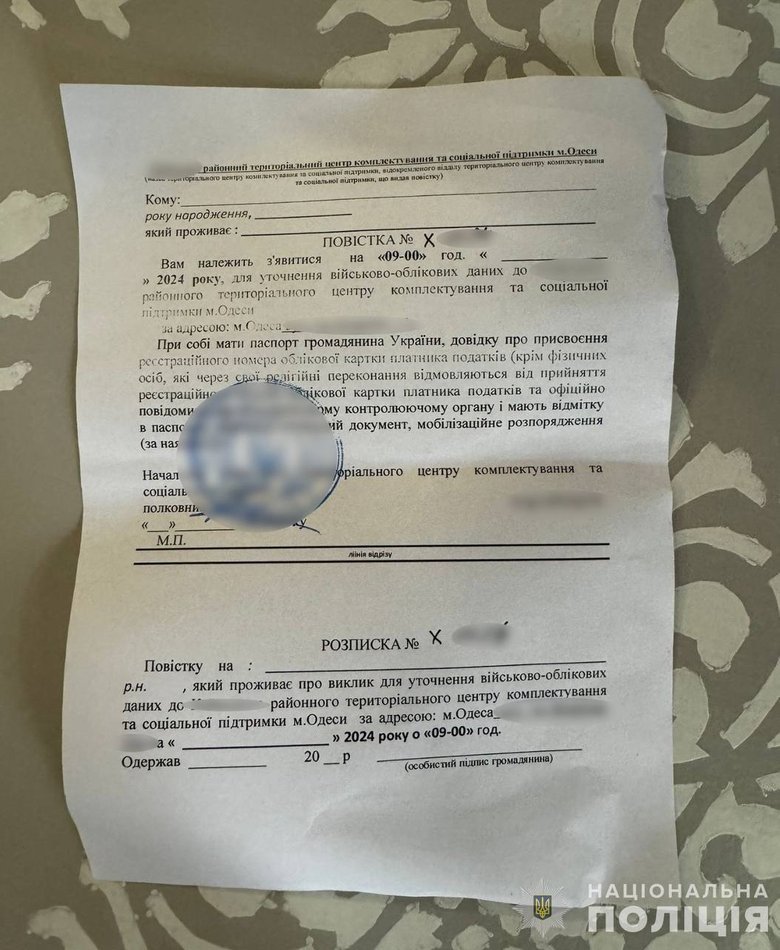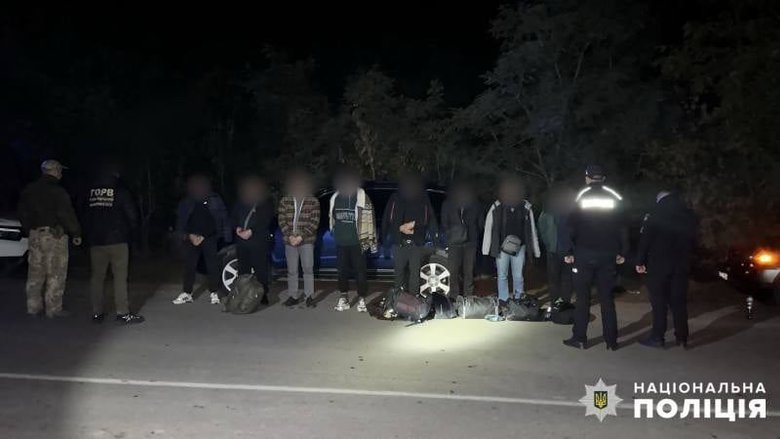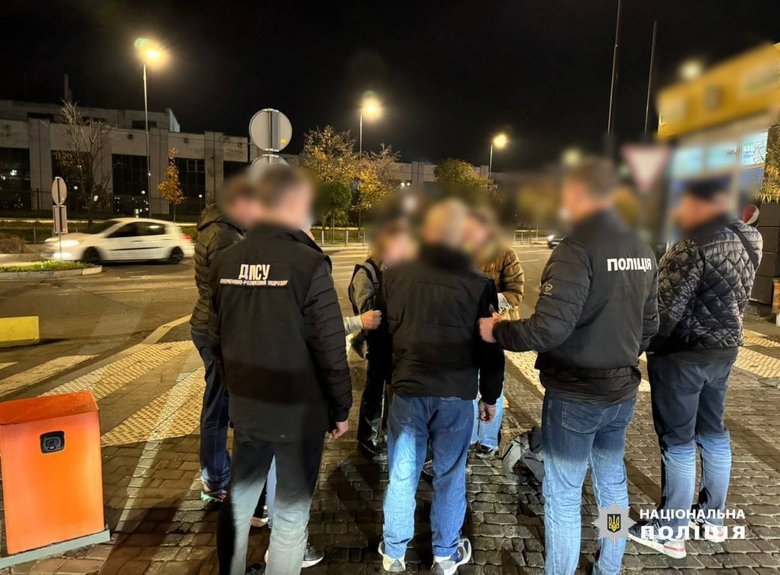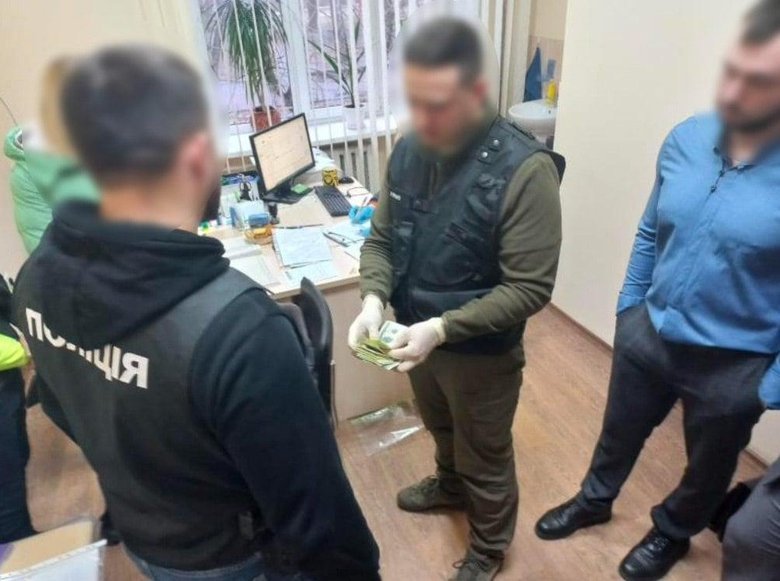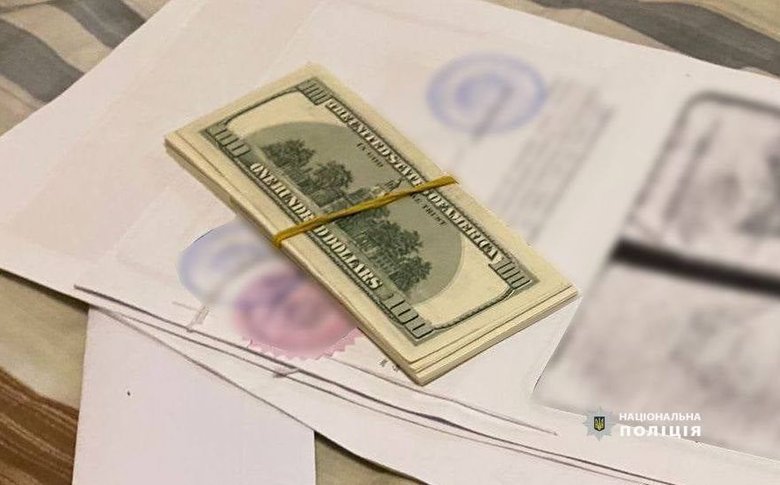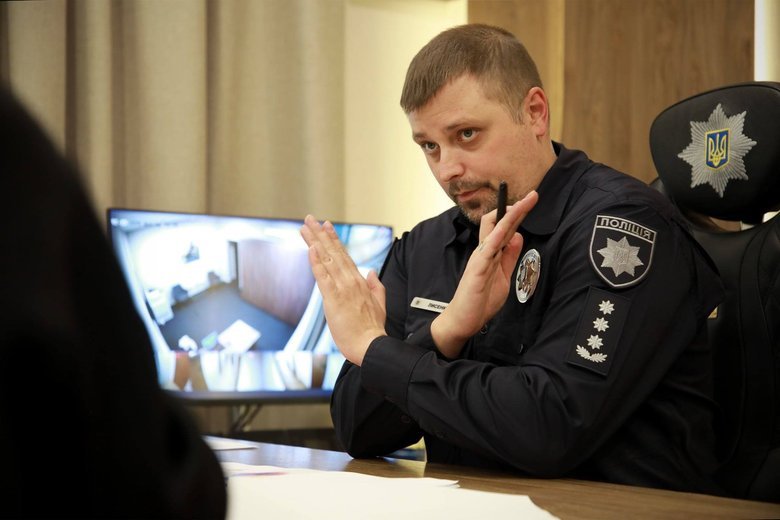They divided market and issue "franchises": how criminals make money on "tours" for draft dodgers
The government proposes to introduce criminal liability for persons liable for military service who flee abroad. A bill has already been submitted to the Verkhovna Rada proposing to amend Article 332 of the Criminal Code of Ukraine (illegal transportation of persons across the state border).
While MPs are studying this document, law enforcement officers continue to document criminal groups for whom organising "tours" for draft dodgers to other countries has turned into a lucrative business during the war.
At the end of August, law enforcement officers conducted another stage of a special operation to identify those who evade mobilisation by looking for ways to go abroad. As well as those who make money from such "services".
We talked to Denys Lysenko, Deputy Head of the Strategic Investigations Department of the National Police, about how criminals have switched from smuggling cigarettes and alcohol to moving people across the border, how much it costs and how this process is organised.
THE PRICE INCLUDES THE RISK OF BEING DETAINED
- What is the overall goal of such special operations? After all, those trying to cross the border are constantly detained.
- We are systematically working on documenting such crimes. And we are not talking about individual cases, but organised criminal groups engaged in such illegal activities. We have two vectors in which we work. These are illegal border crossings by persons of mobilisation age - the classic way of crossing the border outside an official checkpoint - and the operation codenamed "Guardian", which we conduct jointly with the Internal Security of the Armed Forces of Ukraine. In this case, it is a scheme where men of mobilisation age and servicemen submit documents to military units and TCRs about their alleged poor health or the need to care for sick relatives, and thus receive a deferral. So we check the legitimacy of the documents provided by the men. About 10-15% of their total number are fictitious. The "sick" men or their relatives did not go to medical institutions, did not undergo treatment and examination, or did receive assistance under the number of the medical documentation provided, but completely different people did.
- The Minister of Internal Affairs, Ihor Klymenko, has publicly stated that smuggling people across the border outside of checkpoints has become more profitable for criminals than the classic smuggling of cigarettes and alcohol. The money is big, but the risk is less. He also spoke about this in an interview with our publication. How did prices change?
- Most of those who were involved in smuggling, which is now on the decline during the war, have indeed "re-profiled" and started to engage in more profitable illegal business. Because there are many more requests for illegal border crossings. And this "service" is becoming more expensive every year, with the risk of being detained included in the price.
If, for example, in 2022, the price was up to $3,000 for one person to be transferred or transported illegally across the border (by fording across the river, through the mountains, in a hidden compartment of a car), in 2023-2024 we saw the price increase. And at present, it varies from 10 to 20 thousand US dollars per person. It all depends on the method of crossing the border.
As soon as the National Police, the Security Service of Ukraine, and the State Border Guard Service began to actively detect such facts, the first suspicions were announced, and then the courts issued sentences, administrative protocols were drawn up, fines were imposed, this area of illegal activity became more organised. And the price for each "evader" increased.
- And in what cases is criminal liability involved and when is it administrative?
- Criminal liability is provided for the organisation of illegal border crossing. A person who illegally crosses the border is subject only to an administrative offence. That is, they have to pay a fine.
At the same time, we cooperate with the territorial recruitment centres to ensure that anyone who tries to avoid service still defends the state.
- Will they still end up at the front?
- Not necessarily to the front, not everyone is fighting at the front line. If a person is not fit for this due to health problems, he or she can perform other tasks for the Armed Forces of Ukraine.
It is not up to us to decide. Our task, if we detain a group together with the border guards, is to document the organisers and serve them with a notice of suspicion. And the border guards, together with the Armed Forces and the TCR, continue to work with those who tried to cross the border illegally. Administrative protocols are drawn up against them, which are then considered in court. This is mainly done by border guards, but there are cases when administrative protocols are drawn up by our employees.
- So criminal proceedings for evading mobilisation are not opened against such people?
- There are different motives for illegal border crossing. Someone is evading service, someone needs to go abroad for health reasons, but the person decided to go in this way. Therefore, we focus only on the fact of illegal crossing.
For example, in the European Union, the mere fact of illegal crossing is a criminal offence. If you are detained at the border, the materials are sent to court and a preventive measure is chosen. We don't have this because our legislation is more lenient. Criminal proceedings are initiated if a person is served with a summons, but deliberately fails to appear at the TCR. That is, when a person has a relevant motive.
- You said that organised criminal groups are involved in human trafficking abroad. Has the organisation of this process, as well as prices, changed?
- At the end of February 2022, the border was already closed for men to leave. But it was impossible to stop it. You can't close the entire border when there are such flows of people trying to leave the country, as it was then. People were simply looking for an opportunity to cross the border under "greenery".
We did analytics to record which areas had the highest number of cases of illegal border crossing. These are Zakarpattia, Chernivtsi and Ivano-Frankivsk regions, where there are mountains, and Odesa region, where there are floodplains. Do you remember the chaos and horror in those days? People were frightened and running away from the war. But then all these channels began to be gradually blocked.
Prices went up, the organisers of these channels made huge profits, and people stopped smuggling. If you recall, in the US during the Great Depression, when there was a "dry law", the mafia was involved in the sale and manufacture of counterfeit goods. Groups began to fight for excessive profits, and it even went so far as to have members of the criminal world shoot each other.
Something similar happened in our country. Realising the extraordinary profits that could be made on illegally crossing the border, criminals decided to take over this "market" and "franchise" it. They decided who would work with whom and what exactly they would do. Someone gathers groups, someone transports them across the country to the border, and someone else looks for a place to wait until the situation at the border is right to cross it. That is why, as an organised crime unit, we target organised criminal groups engaged in this type of activity. Since 2022, 1,000 suspicions have been announced based on the SBI materials, and indictments have been sent to court against 772 people, most of whom were members of criminal groups (five or more people). In 2025, 38 guilty verdicts have already been delivered against 45 people.
- Before the full-scale war, did these groups specialise in smuggling cigarettes, alcohol and other excisable goods or something else?
- Mostly cigarette smuggling. In order to secure a border crossing or move goods, you need to know the area very well and take into account the weather conditions. Because, for example, in the western regions, when the weather conditions deteriorate, it is very difficult to cross the border outside of checkpoints.
Before the war, our country was used as a transit zone for citizens of Sri Lanka, India, Pakistan, and Afghanistan to get to Europe. They accumulated on the territory of the russian federation, then entered Ukraine from Sumy, Kharkiv and Luhansk regions. Then they waited in Kyiv and the Kyiv region until the weather conditions were normal, the organisers agreed on a certain time, route, guides, etc. And in winter, this illegal activity would stop. Because there is a lot of snow in the mountains and it is very difficult to get through there. In addition, there are traces, and it was easier for border guards to find the trails that such groups used and catch up with them, as they were properly equipped.
This previous experience is also taken into account by the current organisers of such illegal channels. And not only on the western border.
The Odesa region also has its own specifics. There are floodplains there, so boats are often used for illegal crossing. Much also depends on the weather, so it is important that there is no ice, no strong winds and that boats with people do not overturn.
- Are the organisers of such channels based in Ukraine?
- Not always. They may also be located not in the border regions, but in any other region. For their illegal activities, they use social networks and telegram channels, where they post announcements about organising "tours" to cross the border.
- How do they advertise this? You can't just write it openly as it is.
- They do write openly. That's why we work together with our cyber police colleagues to identify such offers on social media and telegram channels. They then carry out further documentation. The second stage of the special operation was the implementation of their information. We worked with administrators of telegram channels and owners of Facebook pages that posted information about illegal border crossing. Documenting such people is quite a painstaking job.
- If the organisers are abroad, is it impossible to bring them to justice?
- Organisers of illegal channels located abroad are one of the most difficult subjects for us to document. Because the entire channel is managed from abroad via messengers, and payments are mostly made to crypto wallets. This means that the customer has no contact with the organiser. However, we identify the organisers, serve them with suspicions in absentia and put them on the wanted list.
"BUFFER BASES" AND "TRICKSTERS"
- Can you tell us about the organisation of "tours" to cross the border using the example of one of the groups? Do the organisers and perpetrators use any means of secrecy?
- In August last year, a KAMAZ truck with 48 men in the back who were trying to illegally leave the country was detained in Odesa Oblast near the border with Moldova. This detention was a record for the number of people in a truck trying to leave at the same time. The cost of one seat in the truck was UAH 150,000.
In this case, the organiser of the illegal channel was also abroad. There was no physical communication between the customers and the organiser.
There was a separate link in this group that was engaged in advertising the provision of such services. There were some people who selected transport and drivers. There was also another link - the so-called 'tricksters'. These are people who look to see if the police are following this or that fugitive, if they have already documented them. So that this does not lead to the detention of the entire group. Therefore, in this particular case, unmanned aerial vehicles were involved in the documentation. This made it possible to continuously document the path of those wishing to cross the border.
- How were all these men gathered? Did they know the gathering point in advance? Was it in Odesa or closer to the border?
- The people were in Odesa and were waiting for a text message with the geo-position where they had to go. From this location, they had to walk another kilometre and a half to the point where the truck was standing. Then they had to say the agreed words to the driver to get into the truck.
Different people were sent different points, probably to be on the safe side. The truck drove towards the border, gradually collecting "passengers".
For about two or three hours, our unmanned aerial vehicles were in the sky, and we were continuously recording everything.
- Were they really unnoticeable?
- I won't disclose all the details, but we found a technical solution that helped us record what was happening in the areas where the drones were visible.
Groups whose organisers were in the east of the country were also detained. They followed a similar scenario. People were found and gathered in the east, and then they travelled west or south. But to get there, they had to bypass checkpoints and find somewhere to eat and spend the night. It was all part of the "service" package.
- And where did they spend the night? In hotels?
- During the first stage of the special operation, we conducted about 70 searches in places that can be considered buffer areas. These were campsites and small local hotels.
They took people in several stages. First, from the east to the central part of the country, where they stopped to rest and eat, and then they moved south or west, depending on where there was an opportunity to cross the border. When they arrived there, they also waited for a while. Then they would be equipped for the journey, taking into account the method of transportation.
At this stage, another criminal group would be involved, which would provide the border crossing itself. That is, they had to choose the least protected area and buy equipment. For example, the group we detained provided border crossing across the Tisa River. They bought specialised suits for people, fitting them according to their size.
- Are there any cases when they set up caches in cars?
- Previously, contraband cigarettes were hidden in the niches of railway carriages, trucks and tourist buses, but now they are trying to transport people across the border in this way. For example, a truck is travelling with some equipment or building materials. They set up a hiding place there, where 3-4 people can fit. If each person paid 15 thousand dollars, you've already earned 60 thousand on this.
- Neither border guards nor customs officers see them?
- Not every car goes through a scanner or is sent for an in-depth inspection.
- Do they not see them on the other side of the border either?
- It depends. If they do, they inform the Ukrainian side and we take them away.
There were also cases when we found caches with people in international buses. Such buses have a compartment for drivers to rest. It is located in the passenger compartment. There is a small niche where a person can lie down and no one can see them. So what do they do? They make a niche between the luggage compartment and the second driver's sleeping area, put a person in it, and that's how they cross the border.
In addition, they try to transport people in cars with trailers. In one case, the hiding place was equipped and covered with construction waste.
- You said that when they are transporting a group of people who want to leave the country, they bypass checkpoints. What kind of transport do they choose?
- It can be buses or private cars. And they don't necessarily travel together. Rather, they travel intermittently.
- I was told by law enforcement officers that they are identifying cheaper schemes for evading mobilisation. When you have to pay 3-4 thousand dollars.
- We are now talking about the conventionally classical way of crossing the border outside the official checkpoint. But there are indeed schemes where they try to solve the issue by forging documents, and the cost is different. This includes falsifying the results of military medical commissions, registering fictitious care for a person with a disability. There are also cases where people falsely adopt children to be able to leave.
Another option looks like this. Here we are talking about the Odesa region. Two women get into a car. They are hiding a child, and in addition, they take a fugitive with them. Together they drive to the transit road - the border guards issue a control ticket stating that there are three people in the car.
Then, in a pre-arranged place, the male fugitive gets out of the car and runs away towards Moldova. After that, the women take the child out of the hiding. At the exit from the transit zone, the number of passengers matches the number at the entrance — three again. So the border guards have no questions.
- If I understood you correctly, criminal groups cooperate with each other and share funds when it comes to illegal border crossing channels. How do those higher up in the criminal hierarchy react to this? Do they get their share?
- At the end of last year, we documented the activities of a criminal organisation headed by subjects of high criminal influence. These are "overseers", criminal authorities. We also documented their criminal meeting, the so-called "mob summit", where the issue of distribution of funds for such illegal business was decided.
Because they worked in the same way as I described - by gathering groups, taking money from people, organising their movement across the country to the border. But not everyone was able to leave, and the money had already been spent. Therefore, the question of who should return the money and in what amount was decided. And the "overseers" were present at this meeting as arbitrators.
In this situation, we had to document the activities of the groups related to illegal border crossing, as well as this conflict situation and the gathering of all the representatives of the criminal world in one place. As a result, 12 criminals were detained, and the case against them is already being considered in court. We also seized lists with data on about a hundred people who used their services. They have already been processed.
Tetiana Bodnia, "Censor.NET"


